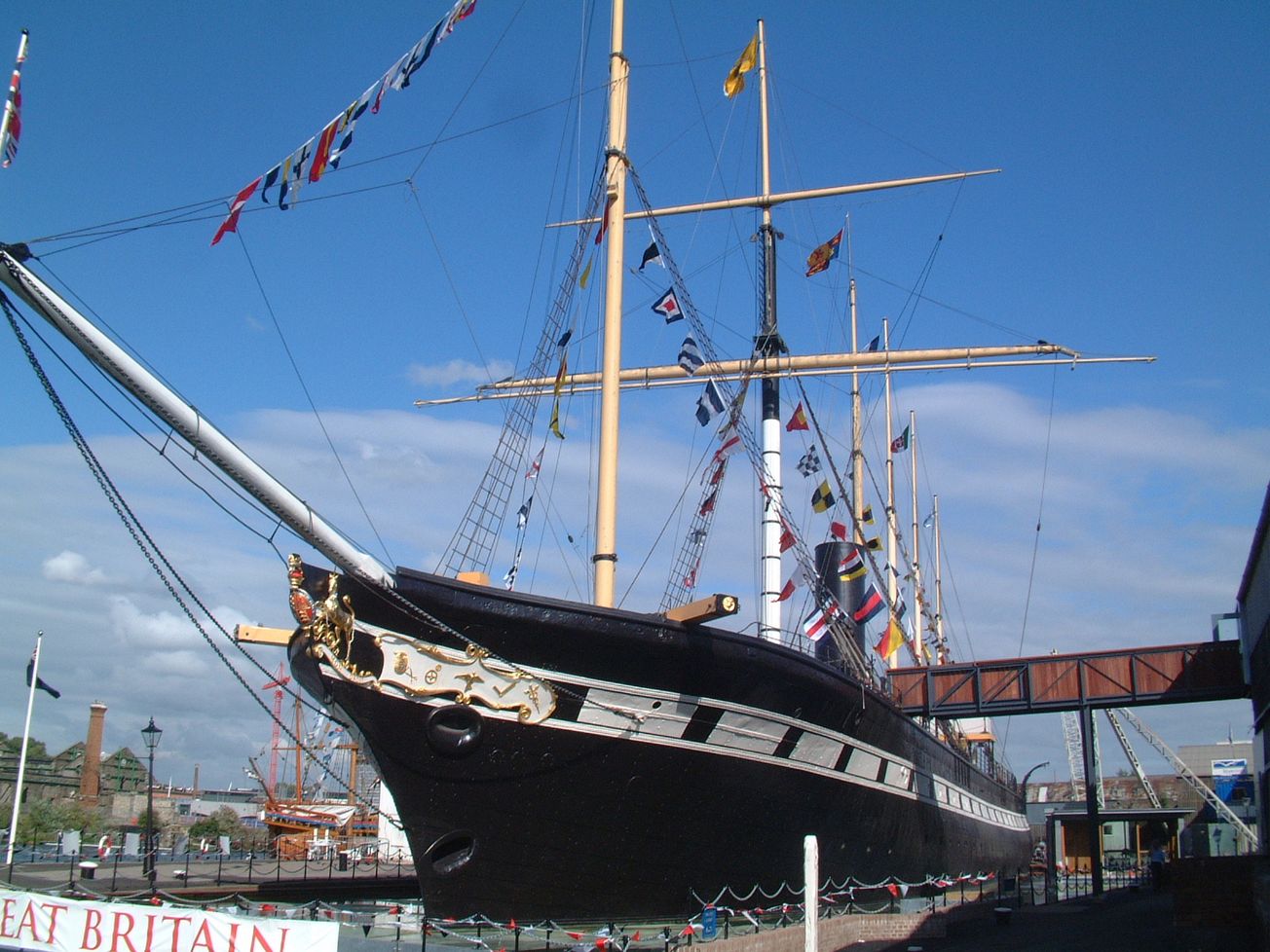By Robert Keirle, Third year History and SS Great Britain volunteer
A lesser known story from the museum of the SS Great Britain; one of Bristol's most popular attractions
The story of the SS Great Britain is familiar to many. Designed by Isambard Kingdom Brunel, it was the longest passenger steam ship of the mid-nineteenth-century, serving initially as a luxury transatlantic liner journeying between Bristol and New York. After running aground in Dundrum Bay in 1846, it was sold on to Gibbs, Bright and Co. and refitted for the England-Australia run amidst the Victorian gold rush.
With its unique combination of iron hull and screw-propeller, the Great Britain boasted travel from Liverpool to Australia in under sixty days at 500 horse-power, making her first voyage to Melbourne in 1852. Today she can be found at Bristol Harbourside and is one of the city’s most popular tourist attractions with an accompanying museum dedicated to the ship and Brunel himself. However, little is known of its sister ship, the Royal Charter – a steam clipper which wrecked off the coast of Anglesey in 1859.
This afternoon's amazing rainbow from the Weather Deck #SSGreatBritain #VisitBristol 🌈 pic.twitter.com/Mc5oU8nhJZ
— Brunel's SS Great Britain (@SSGreatBritain) November 7, 2018
The Royal Charter, constructed at Sandycroft Ironworks and launched in 1855, resembled the Great Britain in a number of ways. It was bought by Gibbs, Bright and Co. who at the same time owned the Great Britain as well as being overseen by the same master shipbuilder, William Paterson. In addition, the Charter became renowned for its speed, promising fast travel to Australia for passengers looking to make their fortune following the discovery of gold in Victoria in 1851.
On the night it was destroyed, the Charter’s gold cargo was insured for approximately £322,400, amounting to £52m by modern standards. Where the Charter critically differed from the Great Britain was in how it was powered. While the Great Britain primarily relied on its steam engine with its sails as backup, the Royal Charter was a clipper designed for speed rather than outright strength and was therefore only equipped with auxiliary steam power. It was this feature that made the Charter incapable of driving against oncoming wind on the night it broke apart.
*gold has been salvaged from the waters close to the site of the wreck including what is believed to be Britain’s largest gold nugget measured at 97 grammes. *
From her maiden voyage in 1855 to her destruction in 1859, the Royal Charter made the trip from Liverpool to Melbourne, returning via South America, a total of six times, on one occasion in as few as 59 days – a record time for this period.
On the evening of 25th October 1859, the Charter was on the last stretch of its return voyage to Liverpool, carrying approximately 390 passengers and 112 crew. Having briefly stopped in Queenstown, Ireland, allowing a few fortunate passengers to disembark and a few more to board, the ship was set to make its fastest arrival yet.
Though, as a result of hurricane strength winds battering the ship as it headed across the Irish Sea, the Charter never reached its destination. Indeed, the wind was strong enough to firmly embed nuggets of gold into the ship’s iron body. As winds rapidly changed direction as the Charter drew close to the Welsh coast, the ship could not outmanoeuvre the storm, with its engine failing and both anchors giving way under the sheer strain.
#OnThisDay in 1859, the Royal Charter tragically wrecked in Anglesey, Wales. The #SSGreatBritain's half-sister ship was just a few hours from Liverpool when disaster struck. Read more on the blog: https://t.co/tMbBaEyPuk pic.twitter.com/tZMEoTtM45
— Brunel's SS Great Britain (@SSGreatBritain) October 26, 2018
By around 3:30am, the ship had become grounded at low tide just off Moelfre, Anglesey and by 7:00am was dashed against the rocks, breaking into pieces. Only 39 survived – all men. It is claimed that those who died did not drown but were instead killed through the impact against the land. Though there was also a persisting legend that passengers were dragged to the depths by the weight of the gold sewn into their clothes for safekeeping.
One man, Joseph Rogers, real name Guzeppi Ruggier, emerged from this tragedy as a hero. He was a Maltese seaman who after three attempts successfully towed a lifeline from the ship to the shore aided by the villagers of Moelfre. This method saved a few though could not help the bulk of woman and children who remained trapped at the opposite end of the ship that soon detached completely.
Ruggier went on to serve with SS Great Britain on twenty-four of its voyages between 1859 and 1875. Much of the recovery and burial of the bodies became the responsibility of the local clergy, with one Reverend Stephen Hughes apparently burying over a hundred in his churchyard alone.
The author Charles Dickens visited Hughes a few months after the wreck and recorded his efforts to identify bodies and contact relatives in a chapter entitled ‘Shipwreck’ in his work The Uncommercial Traveller. Perhaps a more positive legacy of the wreck of the Royal Charter – and the hundreds of other vessels sunk on the same night – was the development of a gale warning system relying on telegraphs to provide an effective forecast to prevent future wrecks of this kind.
As recently as 2012, gold has been salvaged from the waters close to the site of the wreck including what is believed to be Britain’s largest gold nugget measured at 97 grammes.
For more information on the Royal Charter and objects recovered from the wreck, visit the Brunel Institute Library at the SS Great Britain Museum.
Featured image: Wikimedia Commons / mattbuck
Facebook // Epigram Features // Twitter









